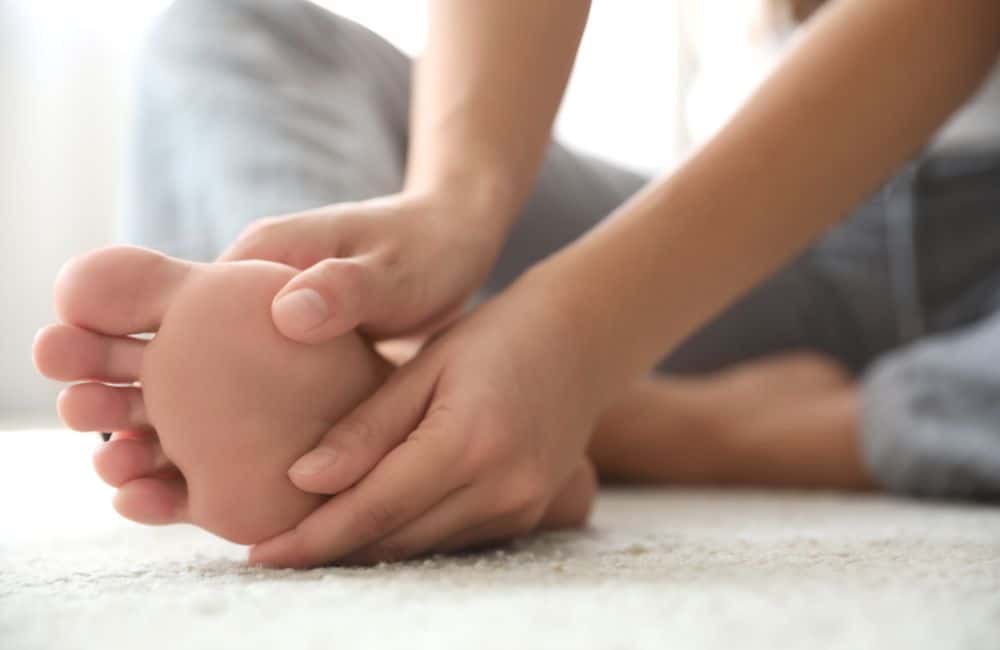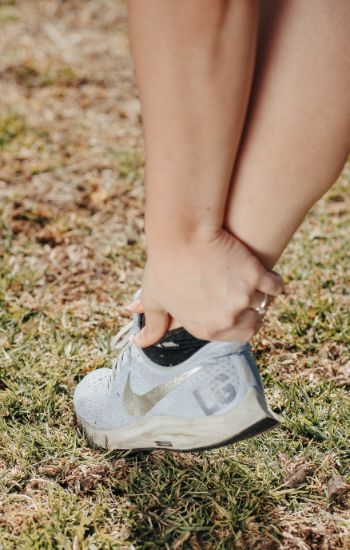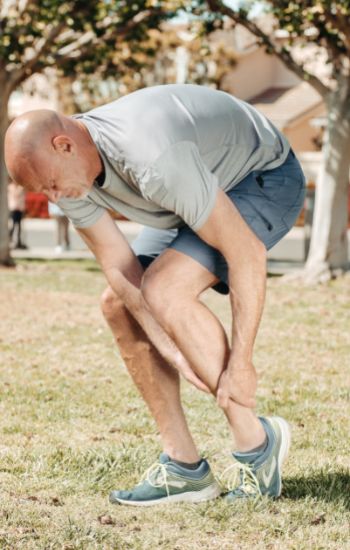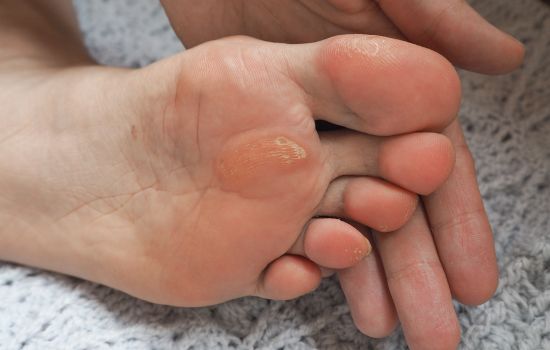Foot pain is a common cause of walking discomfort. It can prevent you from being able to exercise, work or do many other activities in day to day life. Here are 5 common causes of foot pain our podiatrists diagnose and treat in our clinics.


Plantar Fasciitis
Probably the most common painful foot condition is Plantar Fasciitis. It involves inflammation or degeneration of the fibrous connective tissue (fascia) underneath the foot. This tissue connects the heel to the base of the toes. The most common symptom is heel pain when you first stand up in the morning or after sitting or laying down for a while.
Plantar Fasciitis is the result of overuse and is more common in women than males, overweight adults, people with flat feet or high arches, and people who stand on hard surfaces for long periods of time. Exercise without warming up the calves has also been shown to be a contributing factor in getting it.
Treatments for Plantar Fasciitis include relative rest, icing, targeted stretching and exercises as directed by your podiatrist, as well as proper foot support to offload the fascia to help facilitate healing.

Achilles Tendonitis
The Achilles tendon is a band of tissue that connects the heel to your calf. It is the largest tendon in the body, providing the ability to pull the heel upward. This gives you the ability to walk, run, jump and climb. Tendonitis means tendon inflammation. Achilles Tendonitis is the inflammation of the achilles tendon.
Similar to Plantar Fasciitis, Achilles Tendonitis is also an overuse injury that can result in degeneration of the tendon’s fibres. The tendon typically becomes inflamed after strenuous activity or sport. Usually a stiffening or tight sensation of the achilles along with discomfort from direct pressure can indicate the presence of Achilles Tendonitis.
Light stretching or gentle exercising will help ease the tightness temporarily. A longer term stretching and exercise regime in combination with periodic rest, icing, over the counter pain relief and in-shoe raises to offload the achilles tendon can result in recovery. In severe cases, bracing in combination with physical therapy may be required to allow the tendon to repair. This is most often used as a last resort for chronic non-healing tendonitis and only under the direction of a healthcare professional.

Bunions
A Bunion is a term used to describe a “bump” on the side of the big toe but this bump is actually the result of a change in the alignment of the big toe joint. Instead of pointing straight ahead the big toe leans towards your second toe, causing the bump. Bunions are a progressive disorder, gradually changing the angle of the bones which results in the ligaments stretching and tearing as well as wear and tear of the joint which can cause inflammation in the area.
Bunions can be inherited, a result of ill-fitting footwear (high heels/tight footwear) or foot biomechanics (often flat feet). When a bunion is inflamed the big toe joint can be red, sore to touch and can hurt particularly when in tighter footwear.
Treatment often involves changes in footwear, padding, icing, orthoses and activity modification. With severe cases requiring surgical intervention which can take months to recover from and can often result in the bunion returning later down the track.

Ankle Ligament Sprains
Ligaments connect the bones of the body to one another. Ligament sprains of the ankle are a very common cause of foot pain. People often refer to this injury as a “rolled ankle”. This might occur when misstepping on an uneven surface or during sport. For instance, changing direction or a poor landing where the ankle excessively rolls over on the outside. It results in the overstretching or tearing of one of the 3 main ligaments supporting the outside of the ankle.
Severity of a sprain is graded from 1 to 3 with the lower the grade of sprain meaning lesser damage to the ligament and vice versa.
Signs and symptoms include pain, swelling and bruising of the ankle and foot. With rest, ice, compression and elevation (RICE) along with offloading the ankle with crutches or a moon boot as the treatment in the short term. An ankle rehab program will then help with return to activity. With lateral ankle supports via orthoses and ankle strapping during sporting activities being used long term to help prevent the injury reoccurring and support the weakened structures in the ankle.

Corns and Calluses
Calluses are thickened, hard skin that occur on the foot in areas that receive increased friction or pressure.
Corns appear as a horny thickening of the skin on the toes or beneath the foot. This thickening appears as a cone shaped mass pointing down into the skin, often surrounded by callus. They are actually a normal and natural way for the body to protect itself. It protects the soft tissues beneath the skin, similar to your hands. If the pressure continues the skin gets thicker and thicker and usually becomes painful.
Pressure and friction are the main causes of corns and calluses. This can be due to tight footwear, the way you walk or various foot deformities.
Treatment involves the removal of the thickened skin to reduce pressure and relieve pain in the area. You need to address the underlying cause of the increased pressure and friction. Whether it’s footwear, the way you walk or your foot deformity. If you don’t, it’s likely you will need to return for regular removal of the corns and callus in order to remain pain free.
Think one of these common causes of foot pain is impacting you?
The best thing to do is to seek out help from your local podiatrist by booking an appointment. They can diagnose and treat any of these common causes of foot pain. They will aim to get you walking without pain again. Worried about pain in your children? We have information on foot pain or leg pain in kids.
Contributed by Podiatrist Mark Little

